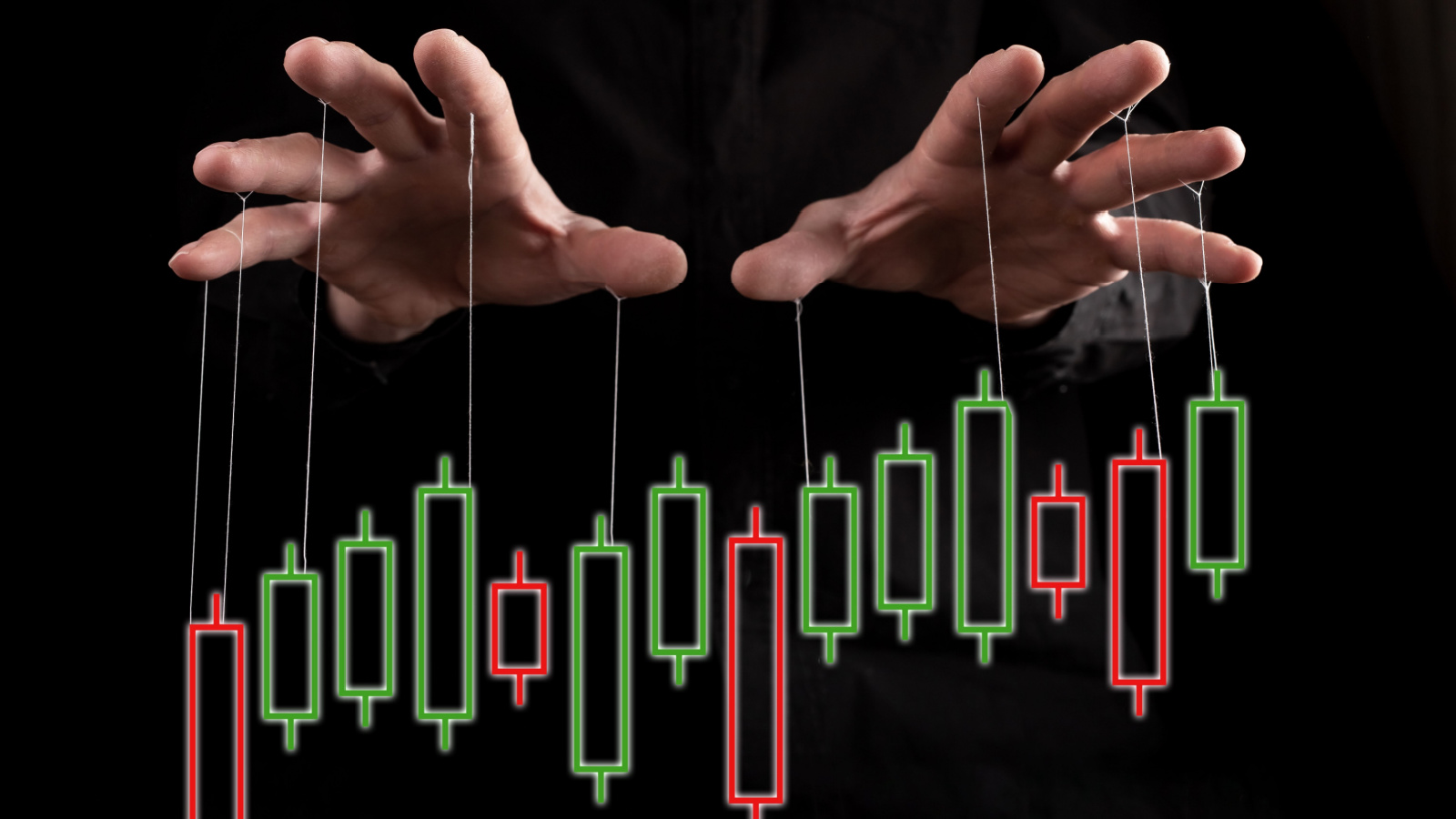
Would you invest in a company that made it clear that every dollar you invest with them might never be seen again?
Ordinarily, that would seem like a ridiculous deal. No rational investor should willingly part ways with their cash.
But Meta Materials (NASDAQ:MMAT) is no regular firm. Although the functional materials company repeatedly warned investors, meme stocks fans jumped in anyway.
The story of Meta Materials illustrates a wider issue that comes with investing in meme stocks. Redditors continue to pump AMC Entertainment (NYSE:AMC) shares, for instance, despite the theater company’s plans to converge that class with its cheaper APE ones. And Mullen Automotive (NASDAQ:MULN) continues to issue press releases of increasingly absurd information to its fans.
What Is (or Was) MMTLP Stock?
The company classifies itself as a functional materials and nanocomposites producer. It claims to be producing technology for many industries, including aerospace and defense, 5G communications and automotive technology. For meme stock investors, much of Meta Materials’ appeal rested in MMTLP, its preferred stock. A holdover from Meta’s merger with Torchlight Energy Resources, MMTLP represented legacy TRCH stockholders’ stake in oil and energy assets.
In 2022, interest — and trading frenzy — peaked when Meta Materials announced it would spin off those legacy assets as Next Bridge Hydrocarbons. MMTLP holders would see their preferred shares converted into private stock of Next Bridge, which would not trade.
As the specified date for the spinoff — and the delisting of MMTLP — approached, meme stock investors continued pumping money into the stock. But why?
The answer can be traced back to the iconic GameStop (NYSE:GME) short squeeze of 2021. As retail traders successfully pushed a stock that Wall Street had cast aside to new heights via the r/WallStreetBets forum, the investing world marveled. This historic market phenomenon changed investing in multiple ways, such as sparking a significant increase in retail investors actively trading and participating in the market.
Since then, investors have been searching for the next short squeeze, targeting companies such as AMC and Bed Bath & Beyond (OTCMKTS:BBBYQ). MMTLP fit the profile. Written off by Wall Street, it quickly gained traction on social media as the short sellers closed in. Retail investors formed a motivated social media community that rushed to pour money into the company.
Then disaster struck.
On what became MMTLP’s last trading day, Dec. 9, 2022, the Financial Industry Regulatory Authority (FINRA) implemented a trading halt, leading to an outcry from shareholders who were stuck with shares that couldn’t be traded.
Meta Materials had warned investors that Next Bridge Hydrocarbons would spin off as a private company and that MMTLP would stop trading as early as November 2022. The record date for the spinoff was set for Dec. 12, 2022. Investors had plenty of time to prepare. FINRA also made this clear.
On Dec. 9, 2022, the regulatory agency published a statement in which it noted “the trading and quoting halt will end concurrent with the deletion of the symbol effective Tuesday, December 13, 2022.” Investors were informed that their stock would stop trading at a clearly specified date. There was no reason for shareholders not to be completely aware of the potential risks.
The standard T+2 settlement cycle dictated that anyone who purchased MMTLP shares after Dec. 8, 2022 would be ineligible to participate in the Next Bridge spinoff. FINRA’s explanation for the trading halt references the T+2 settlement cycle and Meta Materials’ own public announcements about the spinoff. In a March 2023 blog post, officials wrote “One of FINRA’s roles in regulating the activities of broker-dealers trading OTC equity securities is exercising the authority to require such firms to halt quoting and trading activities when FINRA determines that doing so is necessary to protect investors and the public interest.”
Instead of closing the MMTLP chapter, however, FINRA’s decision sparked the start of something even stranger. Investors launched many accusations at FINRA, alleging that it had “illegally” halted trading, thereby “robbing them” of the chance to profit.
The Psychology of Meme Stock Investing
Social media has helped turn meme stock investing into an all-too-popular practice. As InvestorPlace’s Thomas Yeung writes, it has caused many people to develop poor investing habits. Retail investors often band together, united by their belief in a once-unpopular stock or crypto.
Noted journalist and stock market analyst Spencer Jakab compared the psychology of meme stock investors to the scenario presented by Scottish author Charles MacKay. Jakab references the following passage, laid out by MacKay in his work Extraordinary Popular Delusions and the Madness of Crowds:
“We find that whole communities suddenly fix their minds upon one object, and go mad in its pursuit; that millions of people become simultaneously impressed with one delusion, and run after it, till their attention is caught by some new folly more captivating than the first.”
Those words were written in 1841, but centuries later, the principles are no less true. In fact, they may even be more appropriate today. MacKay’s title does an excellent job summing up the problems with the meme stock frenzy that has compelled retail investors to pump millions of dollars into an unstable meme stock, even when the company’s management has specifically advised against it.
This can have dangerous consequences.
Often, it results in retail investors losing money when social media groupthink proves stronger than logic. Since the GameStop short squeeze, investors have reasoned that if enough individuals rally behind a stock, they can overpower Wall Street. This has been described as the “Tinkerbell effect” — if enough people show enthusiasm for a fallen stock, in theory, they can resurrect it. But as former wealth manager John S. Tobey noted, “what is thought to be a new paradigm is simply a groupthink stock manipulation that occurs in cheap, beaten-down stocks.” AMC shares, for instance, are down more than 70% over the past year. MULN stock is down nearly 100%. Despite a dedicated retailer investor following, these meme stocks have struggled to stay anything other than cheap and beaten-down.
It is clear, though, that fear of missing out (FOMO) has also been a driving factor through digital investment communities. Jakab notes that a short squeeze of the GameStop magnitude isn’t likely to happen again. However, just the possibility that it might is enough to compel retail investors to maintain risky positions.
As Maddyness reports, social media can often prove to be a double-edged sword when it comes to investing. It can lead to struggling companies going viral and becoming meme stock sensations. However, when short sellers gain the upper hand, these stocks can fall as quickly as they rose.
These risks didn’t stop investors from rallying around MMTLP, even as Meta Materials management made it clear that the preferred shares would delist following the spinoff. In fact, Meta Materials itself noted the possibility for a short squeeze in MMTLP but cautioned that such price action would not match its fundamentals. In an SEC filing, Meta Materials warned that short squeezes resulted in a “significantly inflated price per share that is disconnected from the underlying value of the company.”
Retail investors still dove in with hopes of cashing out after a squeeze or cashing in on the Next Bridge spinoff.
The Aftermath: Investors Left Holding the Bag
When the preferred shares delisted, though, as management had warned that they would, these retail investors stood by the company’s leadership. On top of that, they largely bought into the narrative that FINRA had acted nefariously. Many investors who had incurred losses alleged that FINRA had joined forces with Wall Street to help hedge fund managers engage in naked short selling. But as Forbes reports, the evidence of any such practice is questionable at best.
One Substack author summed up the general problem regarding the mentality of MMTLP’s cult-like investors who believe themselves to be “victims”:
“In brief, and in broad terms, these holders are apoplectic for one or both of the following reasons:
-
They never wanted to be ‘trapped’ in [Next Bridge Hydrocarbons], and FINRA robbed them of the ability to get out.
-
FINRA’s halt prevented what would have been a massive short squeeze, thus robbing them of untold riches.”
Building on this, former energy hedge fund manager Jeff Davies has speculated that there was never any short squeeze to begin with. Part of this logic stems from the fact that MMTLP’s value was primarily based on the company’s oil and gas operations in the West Texas’ Orogrande basin. In his words:
“Given the lack of drilling success, production or cash flow at [Orogrande], it is certainly possible the preferred stock transaction was simply a means to create the perception or reality of a short squeeze. [Unfortunately] the people who bought into the short-squeeze thesis and spent no time valuing the underlying assets got hurt the most.”
Other experts have shared the sentiment that such allegations against FINRA are misguided. Georgetown professor James Angel, who serves as the academic director for the FINRA Certified Regulatory and Compliance Professional Program, warns that poor communication and a general misunderstanding are the two biggest culprits in the MMTLP saga.
“The basic problem is that there is a massive lack of understanding of the mechanics of dividends and settlement,” Angel told InvestorPlace. “… It appears that a lot of investors thought they were participating in the Mother of All Short Squeezes (MOASS) and they would get out at a huge profit on Dec. 12. The stock did rise from $2 to around $8 in the days before the spinoff but closed around $2.”
Editor’s note: Angel told InvestorPlace that he receives no compensation from FINRA. He stated that Georgetown University directly compensates professors for their work with FINRA’s CRCP program; FINRA does not.
A Cautionary Tale for Retail Investors
Social media, while often providing a sense of community and validation for retail investors, also creates a megaphone for this poor or outright incorrect information. Over the course of 2021 and 2022, MMTLP attracted a group of promoters on Twitter and YouTube who spoke at length on its benefits and growth potential, particularly around the idea of a “short squeeze.” Some of these promoters advertised relationships with former Torchlight CEO John Brda, who is also active on Twitter under the “@JohnBrda” handle.
.@SenWarren Urge investigation into halt of MMTLP trading by FINRA on 12/9/22 Decision negated the interest of retail investors in favor of protecting short positions. Protect retail investors in stock market! Details: https://t.co/Pko4CbBerV
— John Brda (@johnbrda) December 14, 2022
Brda, along with other members of MMTLP’s online community, has used Twitter since Dec. 9 to suggest that FINRA wrongfully suspended trading in MMTLP shares. In fact, starting in March 2023, Brda has shared support for let-it-trade.com, which features a running tally of days since FINRA’s MMTLP suspension. According to the website, its goal is to “[expose] the largest market corruption, deception, and fraud… IN US HISTORY” regarding the suspension. Despite FINRA’s March blog post, the website says FINRA has shared “not a peep as to why” shares of the preferred stock stopped trading.
As Yeung notes, “trust matters far more than truth” in today’s influencer-driven economy. And it’s clear that the MMTLP investor army placed all its trust in social media influencers. Now they’ve been left holding the bag with no clear path forward.
In the months since MMTLP stopped trading, investors have filed multiple lawsuits against FINRA and various brokers. Many investors lost everything, now holding untradeable shares of Next Bridge or nothing at all. But MMTLP still has a loyal community on social media.
There is a clear lesson that investors should take from the MMTLP saga. Constant social media chatter doesn’t make a stock a good investment. That is especially true if a company’s leadership has warned that a security will cease to trade at a specific date and time. Meta Materials’ management team made two things clear before Dec. 12: That MMTLP would be delisted following the spinoff and that Next Bridge Hydrocarbons would be a privately held company afterwards. FINRA likely imposed the trading halt to ensure that no one else purchased MMTLP lest they be left holding the bag.
The MMTLP shareholders continue to spin a conspiracy theory-fueled narrative of a behind-the-scenes plan between FINRA and Wall Street elite that left them in the crossfires. If they had opted instead to listen to the company’s management, they could have sold their shares and walked away with profits.
Just like AMC, Mullen, and dozens of other high-flying meme stocks, this story highlights that simply believing in a stock isn’t enough. Caveat emptor — let the buyer beware.
On the date of publication, Samuel O’Brient did not have (either directly or indirectly) any positions in the securities mentioned in this article. The opinions expressed in this article are those of the writer, subject to the InvestorPlace.com Publishing Guidelines.






